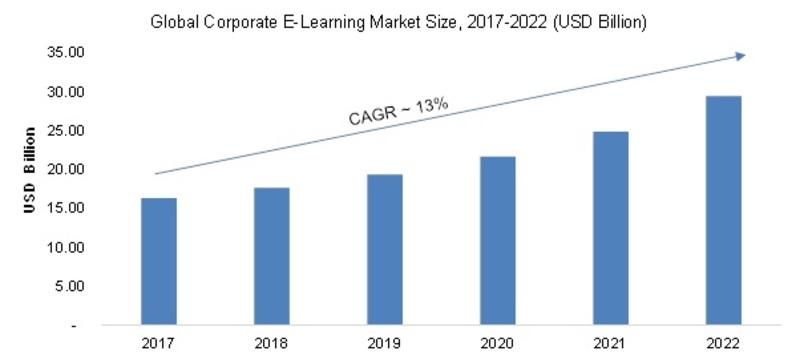Press release
Hair Disease Market Outlook Report 2032 | Procter & Gamble Company, Unilever PLC, L'Oréal SA, Taisho Pharmaceutical Co. Ltd
DelveInsight's "Hair Disease Market Insights, Epidemiology, and Market Forecast-2032" report delivers an in-depth understanding of Hair Disease, historical and forecasted epidemiology, as well as the Hair Disease market trends in the United States, EU5 (Germany, Spain, Italy, France, and United Kingdom), and Japan.
The Hair Disease market report provides current treatment practices, emerging drugs, the market share of the individual therapies, and the current and forecasted Hair Disease market size from 2019 to 2032, segmented by seven major markets. The Report also covers current Hair Disease treatment practice/algorithm, market drivers, market barriers, and unmet medical needs to curate the best opportunities and assesses the underlying potential of the Hair Disease market.
Request for a Free Sample Report @ https://www.delveinsight.com/sample-request/hair-diseases-market?utm_source=openpr&utm_medium=pressrelease&utm_campaign=kpr
Hair Disease Overview
Hair diseases encompass a variety of conditions affecting the hair and scalp. These conditions can impact hair growth, texture, color, and overall health. They can be due to genetic factors, environmental influences, medical conditions, or lifestyle choices.
Types of Hair Diseases
Alopecia:
Androgenetic Alopecia: Commonly known as male or female pattern baldness, it is characterized by progressive thinning of the hair, primarily on the scalp.
Alopecia Areata: An autoimmune disorder causing patchy hair loss.
Telogen Effluvium: A temporary condition where hair falls out after a stressful event or major life change.
Traction Alopecia: Hair loss caused by excessive pulling or tension on hair (e.g., tight hairstyles).
Scarring Alopecia: Permanent hair loss due to scarring of the scalp, also known as cicatricial alopecia.
Hair Shaft Disorders:
Trichorrhexis Nodosa: Hair shaft thickening and breaking.
Monilethrix: Beaded hair condition where the hair shaft is thin and fragile.
Infections:
Tinea Capitis: Fungal infection of the scalp causing scaly patches and hair loss.
Folliculitis: Inflammation of the hair follicles, often due to bacterial infection.
Other Conditions:
Hirsutism: Excessive hair growth in women in areas where men typically grow hair.
Hypertrichosis: Excessive hair growth over the entire body or in specific areas.
Hair Disease Causes
Hair diseases can be triggered by various factors, including:
Genetic predisposition: Family history of certain hair conditions.
Hormonal changes: Such as those occurring during pregnancy, menopause, or due to thyroid disorders.
Autoimmune disorders: Where the immune system attacks hair follicles.
Nutritional deficiencies: Lack of essential nutrients like iron, zinc, and vitamins.
Stress: Both physical and emotional stress can impact hair health.
Medications: Certain drugs, including chemotherapy agents, can cause hair loss.
Infections: Bacterial, fungal, or viral infections affecting the scalp.
Physical damage: Due to harsh hair treatments, tight hairstyles, or excessive heat styling.
Hair Disease Signs and Symptoms
The signs and symptoms of hair diseases vary depending on the specific condition but generally include:
Hair thinning: Gradual reduction in hair density.
Patchy hair loss: Sudden loss of hair in specific areas.
Bald spots: Complete loss of hair in certain areas.
Changes in hair texture: Hair becoming brittle, dry, or breaking easily.
Scalp symptoms: Itching, redness, scaling, or sores on the scalp.
Excessive hair growth: Unusual hair growth patterns or areas.
Hair Disease Diagnosis
Diagnosing hair diseases typically involves a combination of the following:
Medical history and physical examination: Assessing symptoms, family history, and examining the scalp and hair.
Dermatological examination: Using tools like dermatoscopes to closely examine the hair and scalp.
Blood tests: To check for underlying conditions such as thyroid disorders, hormonal imbalances, or nutritional deficiencies.
Scalp biopsy: Taking a small sample of scalp tissue for microscopic examination.
Pull test: Gently pulling on hair strands to see how many hairs come out, helping to diagnose conditions like telogen effluvium.
Fungal culture: Taking samples to detect fungal infections like tinea capitis.
Hair Disease Treatment
Treatment for hair diseases depends on the underlying cause and the specific condition:
Medications:
Topical treatments: Minoxidil (Rogaine) for hair growth stimulation.
Oral medications: Finasteride (Propecia) for androgenetic alopecia, antifungal medications for tinea capitis.
Corticosteroids: For autoimmune conditions like alopecia areata.
Antibiotics or antifungals: For bacterial or fungal infections.
Lifestyle and Home Remedies:
Nutritional supplements: To address deficiencies, such as iron or biotin.
Gentle hair care: Avoiding harsh treatments, heat styling, and tight hairstyles.
Stress management: Techniques like yoga, meditation, and regular exercise.
Medical Procedures:
Hair transplant surgery: Moving hair follicles from one part of the body to bald or thinning areas.
Laser therapy: Low-level laser therapy to stimulate hair growth.
Platelet-rich plasma (PRP) therapy: Injecting platelets to promote hair growth.
Supportive Treatments:
Wigs or hairpieces: For cosmetic coverage.
Counseling and support groups: To cope with the psychological impact of hair loss.
By identifying the specific type of hair disease and its cause, appropriate treatment can be implemented to manage symptoms, promote hair regrowth, and improve overall scalp health.
Learn more about Hair Disease, treatment algorithms in different geographies, and patient journeys. Contact to receive a sample @ https://www.delveinsight.com/report-store/hair-diseases-market?utm_source=openpr&utm_medium=pressrelease&utm_campaign=kpr
Hair Disease Market
The Hair Disease market outlook of the report helps to build a detailed comprehension of the historical, current, and forecasted Hair Disease market trends by analyzing the impact of current Hair Disease therapies on the market and unmet needs, drivers, barriers, and demand for better technology.
This segment gives a thorough detail of the Hair Disease market trend of each marketed drug and late-stage pipeline therapy by evaluating their impact based on the annual cost of therapy, inclusion and exclusion criteria, mechanism of action, compliance rate, growing need of the market, increasing patient pool, covered patient segment, expected launch year, competition with other therapies, brand value, their impact on the market and view of the key opinion leaders. The calculated Hair Disease market data are presented with relevant tables and graphs to give a clear view of the market at first sight.
According to DelveInsight, the Hair Disease market in 7MM is expected to witness a major change in the study period 2019-2032.
Request a sample and discover more about the report offerings at:
https://www.delveinsight.com/sample-request/hair-diseases-market?utm_source=openpr&utm_medium=pressrelease&utm_campaign=kpr
Hair Disease Epidemiology
The Hair Disease epidemiology section provides insights into the historical and current Hair Disease patient pool and forecasted trends for seven individual major countries. It helps to recognize the causes of current and forecasted trends by exploring numerous studies and views of key opinion leaders. This part of the Hair Disease market report also provides the diagnosed patient pool, trends, and assumptions.
Explore more about Hair Disease Epidemiology at: https://www.delveinsight.com/report-store/hair-diseases-market?utm_source=openpr&utm_medium=pressrelease&utm_campaign=kpr
Hair Disease Drugs Uptake
This section focuses on the uptake rate of the potential Hair Disease drugs recently launched in the Hair Disease market or expected to be launched in 2019-2032. The analysis covers the Hair Disease market uptake by drugs, patient uptake by therapies, and sales of each drug.
Hair Disease Drugs Uptake helps in understanding the drugs with the most rapid uptake and the reasons behind the maximal use of new drugs and allows the comparison of the drugs based on Hair Disease market share and size, which again will be useful in investigating factors important in market uptake and in making financial and regulatory decisions.
Hair Disease Pipeline Development Activities
The Hair Disease report provides insights into different therapeutic candidates in Phase II and Phase III stages. It also analyses Hair Disease key players involved in developing targeted therapeutics.
Request for a sample report to understand more about the Hair Disease pipeline development activities at: https://www.delveinsight.com/sample-request/hair-diseases-market?utm_source=openpr&utm_medium=pressrelease&utm_campaign=kpr
Hair Disease Therapeutics Assessment
Prominent pharma players such as Procter & Gamble Company, Unilever PLC, L'Oréal SA, Taisho Pharmaceutical Co. Ltd, and others are working proactively in the Hair Disease Therapeutics market to develop novel therapies which will drive the Hair Disease treatment markets in the upcoming years.
Learn more about the emerging therapies & key companies at: https://www.delveinsight.com/report-store/hair-diseases-market?utm_source=openpr&utm_medium=pressrelease&utm_campaign=kpr
Hair Disease Report Key Insights
1. Hair Disease Patient Population
2. Hair Disease Market Size and Trends
3. Key Cross Competition in the Hair Disease Market
4. Hair Disease Market Dynamics (Key Drivers and Barriers)
5. Hair Disease Market Opportunities
6. Hair Disease Therapeutic Approaches
7. Hair Disease Pipeline Analysis
8. Hair Disease Current Treatment Practices/Algorithm
9. Impact of Emerging Therapies on the Hair Disease Market
Table of Contents
1. Key Insights
2. Executive Summary
3. Hair Disease Competitive Intelligence Analysis
4. Hair Disease Market Overview at a Glance
5. Hair Disease Disease Background and Overview
6. Hair Disease Patient Journey
7. Hair Disease Epidemiology and Patient Population
8. Hair Disease Treatment Algorithm, Current Treatment, and Medical Practices
9. Hair Disease Unmet Needs
10. Key Endpoints of Hair Disease Treatment
11. Hair Disease Marketed Products
12. Hair Disease Emerging Therapies
13. Hair Disease Seven Major Market Analysis
14. Attribute Analysis
15. Hair Disease Market Outlook (7 major markets)
16. Hair Disease Access and Reimbursement Overview
17. KOL Views on the Hair Disease Market
18. Hair Disease Market Drivers
19. Hair Disease Market Barriers
20. Appendix
21. DelveInsight Capabilities
22. Disclaimer
Get the Detailed TOC of the Hair Disease Market report here: https://www.delveinsight.com/report-store/hair-diseases-market?utm_source=openpr&utm_medium=pressrelease&utm_campaign=kpr
Contact Us:
Kritika Rehani
info@delveinsight.com
+91-9650213330
www.delveinsight.com
About DelveInsight
DelveInsight is a leading Life Science market research and business consulting company recognized for its off-the-shelf syndicated market research reports and customized solutions to firms in the healthcare sector.
The Hair Disease market report provides current treatment practices, emerging drugs, the market share of the individual therapies, and the current and forecasted Hair Disease market size from 2019 to 2032, segmented by seven major markets. The Report also covers current Hair Disease treatment practice/algorithm, market drivers, market barriers, and unmet medical needs to curate the best opportunities and assesses the underlying potential of the Hair Disease market.
Request for a Free Sample Report @ https://www.delveinsight.com/sample-request/hair-diseases-market?utm_source=openpr&utm_medium=pressrelease&utm_campaign=kpr
Hair Disease Overview
Hair diseases encompass a variety of conditions affecting the hair and scalp. These conditions can impact hair growth, texture, color, and overall health. They can be due to genetic factors, environmental influences, medical conditions, or lifestyle choices.
Types of Hair Diseases
Alopecia:
Androgenetic Alopecia: Commonly known as male or female pattern baldness, it is characterized by progressive thinning of the hair, primarily on the scalp.
Alopecia Areata: An autoimmune disorder causing patchy hair loss.
Telogen Effluvium: A temporary condition where hair falls out after a stressful event or major life change.
Traction Alopecia: Hair loss caused by excessive pulling or tension on hair (e.g., tight hairstyles).
Scarring Alopecia: Permanent hair loss due to scarring of the scalp, also known as cicatricial alopecia.
Hair Shaft Disorders:
Trichorrhexis Nodosa: Hair shaft thickening and breaking.
Monilethrix: Beaded hair condition where the hair shaft is thin and fragile.
Infections:
Tinea Capitis: Fungal infection of the scalp causing scaly patches and hair loss.
Folliculitis: Inflammation of the hair follicles, often due to bacterial infection.
Other Conditions:
Hirsutism: Excessive hair growth in women in areas where men typically grow hair.
Hypertrichosis: Excessive hair growth over the entire body or in specific areas.
Hair Disease Causes
Hair diseases can be triggered by various factors, including:
Genetic predisposition: Family history of certain hair conditions.
Hormonal changes: Such as those occurring during pregnancy, menopause, or due to thyroid disorders.
Autoimmune disorders: Where the immune system attacks hair follicles.
Nutritional deficiencies: Lack of essential nutrients like iron, zinc, and vitamins.
Stress: Both physical and emotional stress can impact hair health.
Medications: Certain drugs, including chemotherapy agents, can cause hair loss.
Infections: Bacterial, fungal, or viral infections affecting the scalp.
Physical damage: Due to harsh hair treatments, tight hairstyles, or excessive heat styling.
Hair Disease Signs and Symptoms
The signs and symptoms of hair diseases vary depending on the specific condition but generally include:
Hair thinning: Gradual reduction in hair density.
Patchy hair loss: Sudden loss of hair in specific areas.
Bald spots: Complete loss of hair in certain areas.
Changes in hair texture: Hair becoming brittle, dry, or breaking easily.
Scalp symptoms: Itching, redness, scaling, or sores on the scalp.
Excessive hair growth: Unusual hair growth patterns or areas.
Hair Disease Diagnosis
Diagnosing hair diseases typically involves a combination of the following:
Medical history and physical examination: Assessing symptoms, family history, and examining the scalp and hair.
Dermatological examination: Using tools like dermatoscopes to closely examine the hair and scalp.
Blood tests: To check for underlying conditions such as thyroid disorders, hormonal imbalances, or nutritional deficiencies.
Scalp biopsy: Taking a small sample of scalp tissue for microscopic examination.
Pull test: Gently pulling on hair strands to see how many hairs come out, helping to diagnose conditions like telogen effluvium.
Fungal culture: Taking samples to detect fungal infections like tinea capitis.
Hair Disease Treatment
Treatment for hair diseases depends on the underlying cause and the specific condition:
Medications:
Topical treatments: Minoxidil (Rogaine) for hair growth stimulation.
Oral medications: Finasteride (Propecia) for androgenetic alopecia, antifungal medications for tinea capitis.
Corticosteroids: For autoimmune conditions like alopecia areata.
Antibiotics or antifungals: For bacterial or fungal infections.
Lifestyle and Home Remedies:
Nutritional supplements: To address deficiencies, such as iron or biotin.
Gentle hair care: Avoiding harsh treatments, heat styling, and tight hairstyles.
Stress management: Techniques like yoga, meditation, and regular exercise.
Medical Procedures:
Hair transplant surgery: Moving hair follicles from one part of the body to bald or thinning areas.
Laser therapy: Low-level laser therapy to stimulate hair growth.
Platelet-rich plasma (PRP) therapy: Injecting platelets to promote hair growth.
Supportive Treatments:
Wigs or hairpieces: For cosmetic coverage.
Counseling and support groups: To cope with the psychological impact of hair loss.
By identifying the specific type of hair disease and its cause, appropriate treatment can be implemented to manage symptoms, promote hair regrowth, and improve overall scalp health.
Learn more about Hair Disease, treatment algorithms in different geographies, and patient journeys. Contact to receive a sample @ https://www.delveinsight.com/report-store/hair-diseases-market?utm_source=openpr&utm_medium=pressrelease&utm_campaign=kpr
Hair Disease Market
The Hair Disease market outlook of the report helps to build a detailed comprehension of the historical, current, and forecasted Hair Disease market trends by analyzing the impact of current Hair Disease therapies on the market and unmet needs, drivers, barriers, and demand for better technology.
This segment gives a thorough detail of the Hair Disease market trend of each marketed drug and late-stage pipeline therapy by evaluating their impact based on the annual cost of therapy, inclusion and exclusion criteria, mechanism of action, compliance rate, growing need of the market, increasing patient pool, covered patient segment, expected launch year, competition with other therapies, brand value, their impact on the market and view of the key opinion leaders. The calculated Hair Disease market data are presented with relevant tables and graphs to give a clear view of the market at first sight.
According to DelveInsight, the Hair Disease market in 7MM is expected to witness a major change in the study period 2019-2032.
Request a sample and discover more about the report offerings at:
https://www.delveinsight.com/sample-request/hair-diseases-market?utm_source=openpr&utm_medium=pressrelease&utm_campaign=kpr
Hair Disease Epidemiology
The Hair Disease epidemiology section provides insights into the historical and current Hair Disease patient pool and forecasted trends for seven individual major countries. It helps to recognize the causes of current and forecasted trends by exploring numerous studies and views of key opinion leaders. This part of the Hair Disease market report also provides the diagnosed patient pool, trends, and assumptions.
Explore more about Hair Disease Epidemiology at: https://www.delveinsight.com/report-store/hair-diseases-market?utm_source=openpr&utm_medium=pressrelease&utm_campaign=kpr
Hair Disease Drugs Uptake
This section focuses on the uptake rate of the potential Hair Disease drugs recently launched in the Hair Disease market or expected to be launched in 2019-2032. The analysis covers the Hair Disease market uptake by drugs, patient uptake by therapies, and sales of each drug.
Hair Disease Drugs Uptake helps in understanding the drugs with the most rapid uptake and the reasons behind the maximal use of new drugs and allows the comparison of the drugs based on Hair Disease market share and size, which again will be useful in investigating factors important in market uptake and in making financial and regulatory decisions.
Hair Disease Pipeline Development Activities
The Hair Disease report provides insights into different therapeutic candidates in Phase II and Phase III stages. It also analyses Hair Disease key players involved in developing targeted therapeutics.
Request for a sample report to understand more about the Hair Disease pipeline development activities at: https://www.delveinsight.com/sample-request/hair-diseases-market?utm_source=openpr&utm_medium=pressrelease&utm_campaign=kpr
Hair Disease Therapeutics Assessment
Prominent pharma players such as Procter & Gamble Company, Unilever PLC, L'Oréal SA, Taisho Pharmaceutical Co. Ltd, and others are working proactively in the Hair Disease Therapeutics market to develop novel therapies which will drive the Hair Disease treatment markets in the upcoming years.
Learn more about the emerging therapies & key companies at: https://www.delveinsight.com/report-store/hair-diseases-market?utm_source=openpr&utm_medium=pressrelease&utm_campaign=kpr
Hair Disease Report Key Insights
1. Hair Disease Patient Population
2. Hair Disease Market Size and Trends
3. Key Cross Competition in the Hair Disease Market
4. Hair Disease Market Dynamics (Key Drivers and Barriers)
5. Hair Disease Market Opportunities
6. Hair Disease Therapeutic Approaches
7. Hair Disease Pipeline Analysis
8. Hair Disease Current Treatment Practices/Algorithm
9. Impact of Emerging Therapies on the Hair Disease Market
Table of Contents
1. Key Insights
2. Executive Summary
3. Hair Disease Competitive Intelligence Analysis
4. Hair Disease Market Overview at a Glance
5. Hair Disease Disease Background and Overview
6. Hair Disease Patient Journey
7. Hair Disease Epidemiology and Patient Population
8. Hair Disease Treatment Algorithm, Current Treatment, and Medical Practices
9. Hair Disease Unmet Needs
10. Key Endpoints of Hair Disease Treatment
11. Hair Disease Marketed Products
12. Hair Disease Emerging Therapies
13. Hair Disease Seven Major Market Analysis
14. Attribute Analysis
15. Hair Disease Market Outlook (7 major markets)
16. Hair Disease Access and Reimbursement Overview
17. KOL Views on the Hair Disease Market
18. Hair Disease Market Drivers
19. Hair Disease Market Barriers
20. Appendix
21. DelveInsight Capabilities
22. Disclaimer
Get the Detailed TOC of the Hair Disease Market report here: https://www.delveinsight.com/report-store/hair-diseases-market?utm_source=openpr&utm_medium=pressrelease&utm_campaign=kpr
Contact Us:
Kritika Rehani
info@delveinsight.com
+91-9650213330
www.delveinsight.com
About DelveInsight
DelveInsight is a leading Life Science market research and business consulting company recognized for its off-the-shelf syndicated market research reports and customized solutions to firms in the healthcare sector.
Permanent link to this press release:
Copy
Please set a link in the press area of your homepage
to this press release on woodPRI. woodPRI disclaims liability for any content contained in
this release.
Recommend

/newsMicroencapsulation Market Deep Analysis on Key Players - Dow Corning, Encapsys, Syngenta Crop Protection, Evonik Industries, 3M and Bayer
Market Study Report Adds Global Microencapsulation Market Size, Status and Forecast 2024 added to its database. The report provides key statistics on the current state of the industry and other analytical data to understand the market.
Extensive research is required for choosing the appropriate cor...

/newsGermany Airbag Market Size 2023: Global Share, Industry And Report Analysis By 2030 | Hyundai Mobis Co., Ltd. Key Safety Systems, Inc. Robert Bosch GmbH
Germany airbag market is expected to grow at a CAGR of around 6% during the forecast period. Germany Airbag Market research report refers to gathering and analyzing significant market data serve as best medium for various industry players to launch novel product or service. It is vital for key firms...

/newsSecurities Brokerages And Stock Exchanges Market Outlook 2021: Big Things are Happening
A new intelligence report released by HTF MI with title "Global Securities Brokerages And Stock Exchanges Market Survey & Outlook" is designed covering micro level of analysis by Insurers and key business segments, offerings and sales channels. The Global Securities Brokerages And Stock Exchange...

/newsRenewable Chemicals Market Emerging Trends and Competitive Landscape Forecast to 2028
The renewable chemicals market was valued at US$ 80,566.30 million in 2021 and is projected to reach US$ 1,76,750.76 million by 2028 it is expected to grow at a CAGR of 11.9% from 2021 to 2028. The research report focuses on the current market trends, opportunities, future potential of the market, a...

/newsHow Coronavirus is Impacting Cold Brew Coffee, Global Market Volume Analysis, Size, Share and Key Trends 2020-2026
"Market Latest Research Report 2020:
Los Angles United States, February 2020: The Cold Brew Coffee market has been garnering remarkable momentum in the recent years. The steadily escalating demand due to improving purchasing power is projected to bode well for the global market. QY Research's lates...

/newsCorporate E-Learning Market - Global Industry Size, Share, Key Players Analysis that are Infor, SkillSoft Corporation, Adrenna, CERTPOINT Systems and others with Regional Forecast to 2022
Overview:
E-Learning is used to enhance the learning procedures for newer job requirements and to make employees sound about the internal and external changes in the market and respective organizations. This method has created considerable differences in the ways of training and developing employee...
